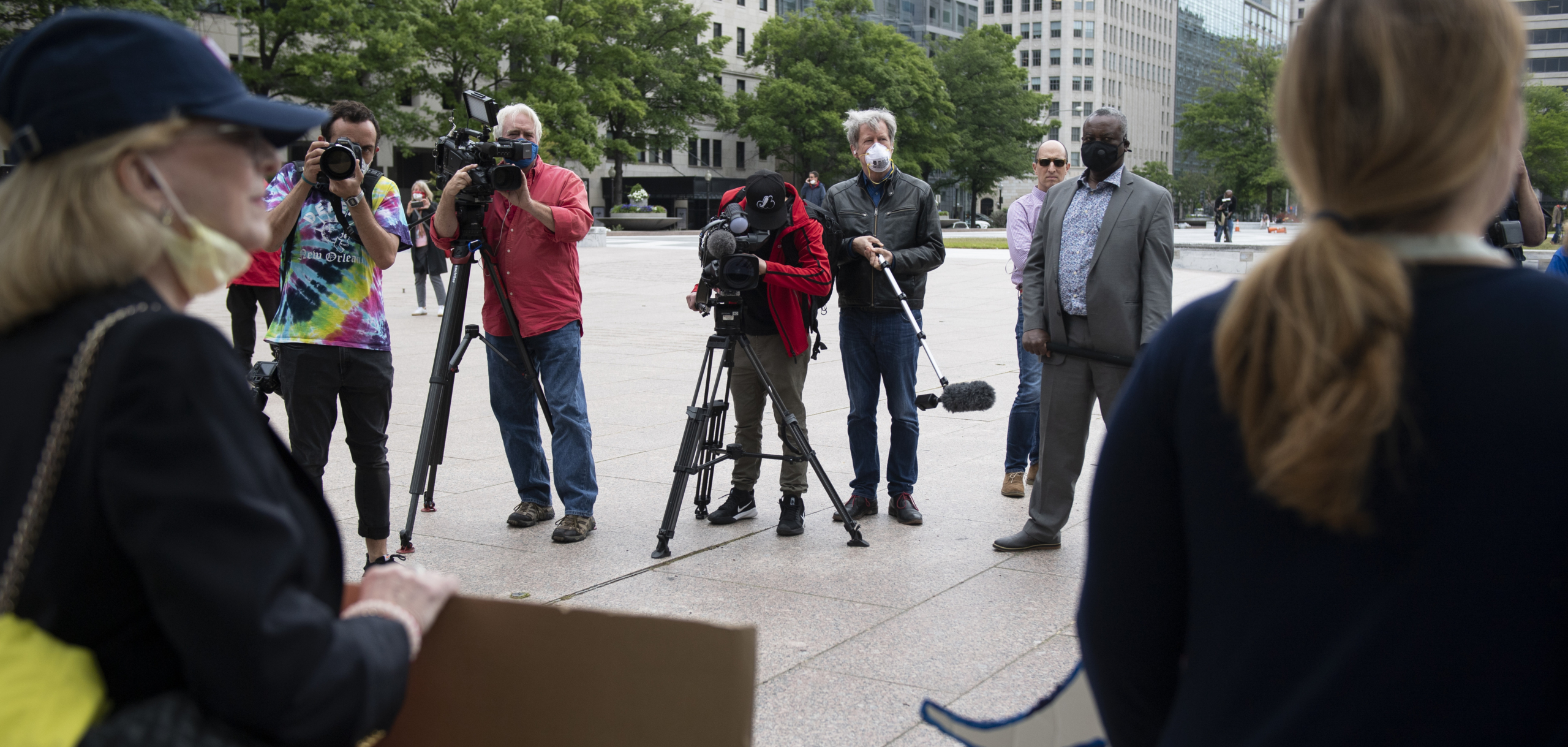Sign up for the daily CJR newsletter.
Bryan Woolston had a plan when he went to cover the anti-lockdown rally last month at the Kentucky state capitol. He wore a cloth mask because the demonstration was billed as a social-distancing gathering. He went on foot in order to get close.
But then the crowd got rowdy. People started screaming and shouting. Social distancing went out the window. Soon, he was within shoulder-bumping distance of the protesters he was covering.
“I should have known better,” Woolston, who was shooting the event as a photographer for Reuters, says. “I was too close, really. When you’re in the field with people who do not believe this virus [poses] a threat, they don’t care about stopping its spread.”
THE MEDIA TODAY: The many coronavirus conspiracy theories
Journalism currently has no industry standard for how to cover such rallies. Newsrooms and journalists are making it up as they go along, adjusting strategies as the gatherings grow more volatile. Plans vary wildly. Some newsrooms provide guidelines to their reporters and check in with them after events to reevaluate their plans; others simply leave the decisions to individual reporters. Some journalists carry several spray bottles of purifier, while others carry none. Some are wearing N95 masks; others, just surgical or cloth.
Days after the Kentucky rally, the Committee to Protect Journalists issued a safety advisory for reporters covering anti-lockdown protests. The advisory included a set of guidelines, advising reporters to, among other things, maintain a minimum six-foot distance from everyone at all times; wear a mask, preferably an N95; work in pairs, so a colleague can watch your back; identify possible escape routes; and keep on the edge of the crowd, to enable a quick getaway.
Jason Reich, vice president of corporate security at the New York Times, advises that any journalist covering a protest should wear a respirator mask and gloves, and carry surgical-type masks to give to interview subjects. However, he adds, a journalist should not overdo it and show up in PPE gear that resembles a space suit. “That would not be appropriate, and it might be antagonistic,” he says. Journalists should also set timers on their phones for 15 minutes or less, to remind them to pause, look around, and reassess whether they might be boxed in. And keep an eye peeled for hostile people who aren’t wearing masks. “Those are the people I would avoid,” Reich says.
Woolston says he benefited from training in biological hazards in a previous incarnation as an Explosive Ordnance Disposal technician. He understands how to limit cross-contamination. He wears masks, gloves and glasses. He always carries three spray bottles of alcohol-based purifier to methodically sanitize equipment, hands, and car at various stages of the reporting operation. Potentially contaminated items go into plastic bags for cleaning or disposal later.
Before the pandemic, he would shoot an image from different angles and exposures; now, he frames it in his mind, snaps it, and moves out. He’s stopped trying to get names from everyone he photographs. “That luxury just doesn’t exist anymore,” he says. “Every minute you linger you might make contact with someone.”
Chris Post took a similar approach when he covered reopening protests in Harrisburg, Pennsylvania, for WMFZ-TV. He says “time, distance, and shielding” is his modus operandi.
Post and his reporting partner committed to a short period of time on the ground. Shielding involved N95 masks and sanitizer to wipe off gear. For distancing, they used shotgun microphones. They stayed on the outer limit of the gathering and stepped back if protesters came too close. They constantly looked around and agreed that they wouldn’t waste time looking for each other if they became separated—they’d just meet at the car.
The live shot was complicated. Wearing an N95 mask muffles the voice. So they looked for a safe place for the reporter to take it off, far from anyone who might harass them. The pair chose an elevated wooden deck in front of a shuttered coffee shop. It provided a good view in case someone approached.
Most vital, Post says, is devising a strategy and talking it through to avoid surprises. “We planned for the worst-case scenario,” he said.” Luckily, it never came. Still, they’re ready for next time.
NEW: How the Washington Examiner became a traffic monster
Has America ever needed a media defender more than now? Help us by joining CJR today.







